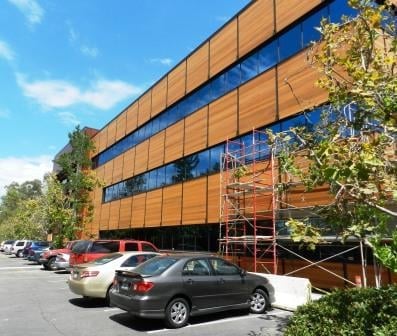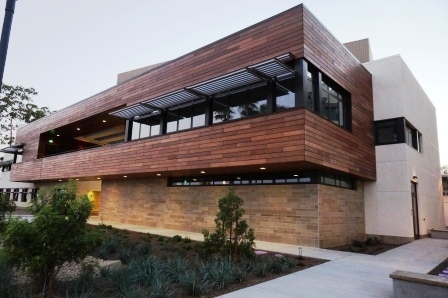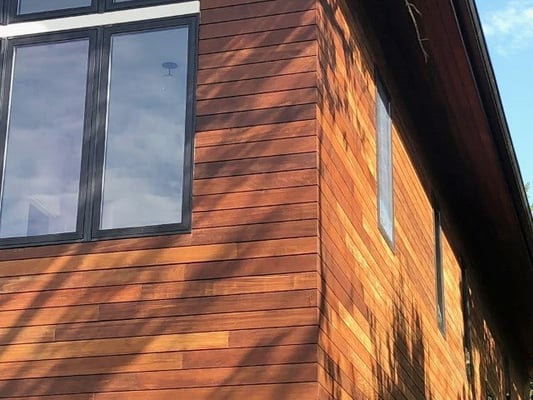
Related Posts



"Beautiful wood rain screen designs are sprouting up everywhere. They don't even know they are sustainable."
Although rain screen design has been around for for over eight hundred years, one of the emerging trends in modern architecture is the rapidly growing use of rainscreen systems in sustainable design. Part of this trend is due to the increasing influence of healthier and 'greener' sustainable design and the rest is due to the fact that rain screen design is a proven technology that makes lots of sense.What is a wood rainscreen? Essentially,  a wood rain screen could be defined as any wood siding or cladding material that is spaced far enough off the exterior wall to create a "wall cavity" behind the siding. In this way, the wood siding acts as a 'rain screen' and protects the dwelling or structure from rain, snow, wind, ice, etc. The wall cavity created behind the siding does the rest of work by creating a space for bulk water to drain out and away from the building and equally important, provides a way for moisture trapped inside the structure to escape.
a wood rain screen could be defined as any wood siding or cladding material that is spaced far enough off the exterior wall to create a "wall cavity" behind the siding. In this way, the wood siding acts as a 'rain screen' and protects the dwelling or structure from rain, snow, wind, ice, etc. The wall cavity created behind the siding does the rest of work by creating a space for bulk water to drain out and away from the building and equally important, provides a way for moisture trapped inside the structure to escape.
Looking at wood rainscreen systems from a green building perspective the key benefits are:
Provides a beautiful, all natural wood material for the cladding
Protects the building from the weather by placing the siding away from the home or building.
The wall cavity creates a passive thermal buffer zone between the outside and the inside of the home or structure.
Allows moisture that is trapped inside the structure a means to flow out, minimizing mold and mildew inside.
Less moisture, mold and mildew means less rot and decay which creates not only a healthier interior but a longer lasting structure as a whole.
Many savvy architects and designers are using the natural beauty of wood to add warmth and richness to the exterior facade of commercial buildings. The wood rain screen may be used on the whole exterior or merely as an accent to add a vibrant contrasting look to your design. The inherent benefits of a healthy wood rain screen design are clear: the rain screen does its scientific magic while the natural wood siding adds beauty and can provide a contrast to colder looking inorganic building materials such as concrete, stucco, stone, brick or metal.
The inherent benefits of a healthy wood rain screen design are clear: the rain screen does its scientific magic while the natural wood siding adds beauty and can provide a contrast to colder looking inorganic building materials such as concrete, stucco, stone, brick or metal.
While wood rainscreens make a beautiful statement for buildings, homeowners are increasingly using more and more wood rainscreen designs for new homes and replacement siding. Beautiful homes throughout the US and Canada are now sporting new wood rain screen exteriors. Wood siding species such as Ipe hardwood, Machiche, Garapa, Jatoba (Brazilian Cherry), and Santa Maria are leading the way. These long lasting hardwood cladding options are being specified because of their stability, beauty and extreme durability to the elements.
Please visit our website to learn more about wood rain screen species, rain screen design, picture galleries, installation and more:
Wood Rain Screen Cladding Species Options
Understanding Rain Screen Systems
REQUEST A RAIN SCREEN QUOTE TODAY
For an excellent primer on rain screen design and options, please download our white paper, "The Ultimate GUide to Building Green with Rain Screen Wood Siding." Download your FREE Rainscreen Guide today by clicking the button below:


